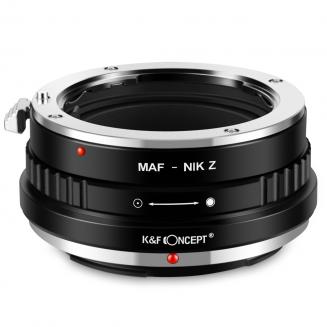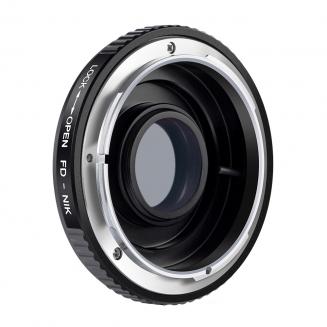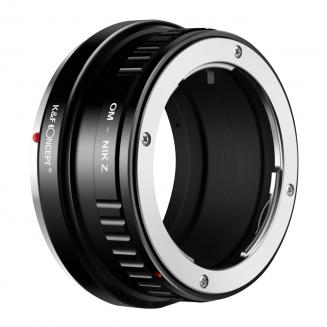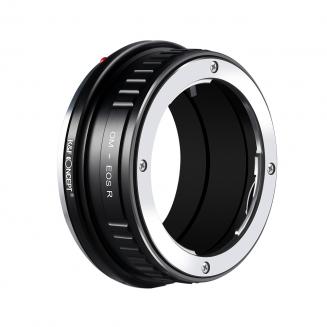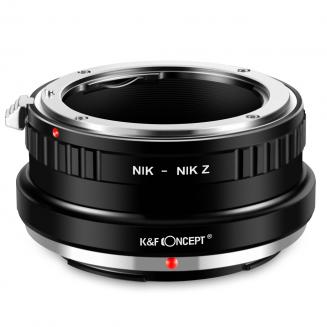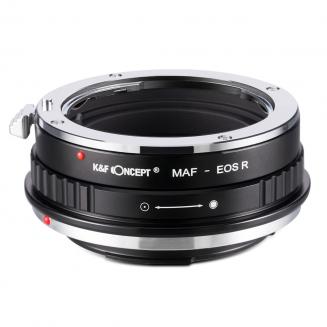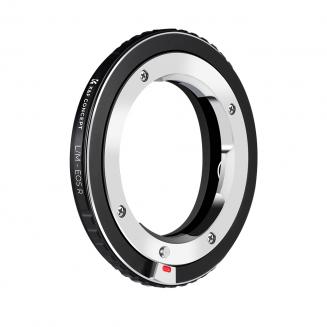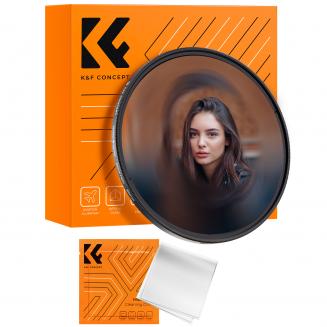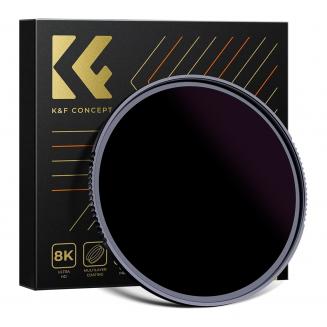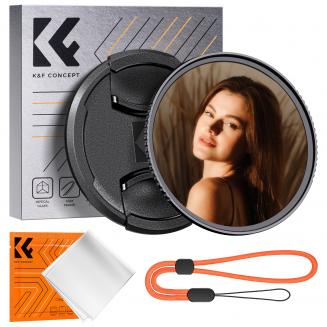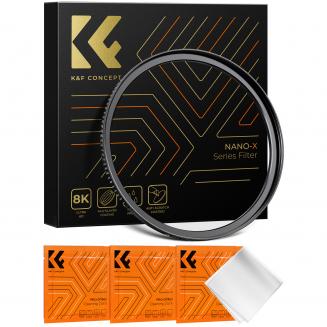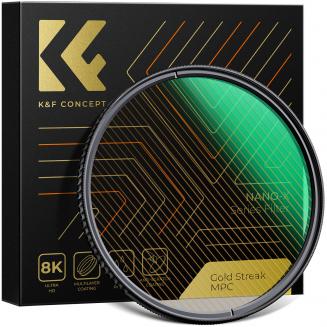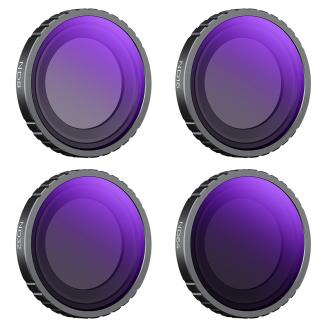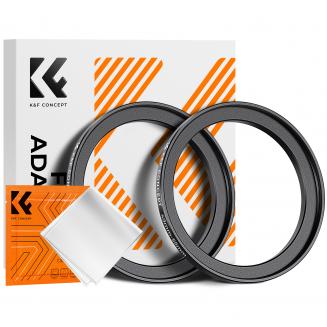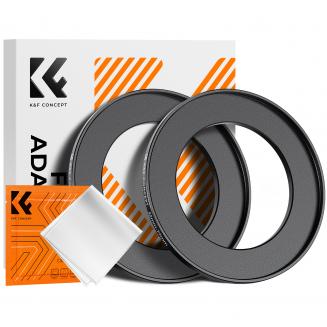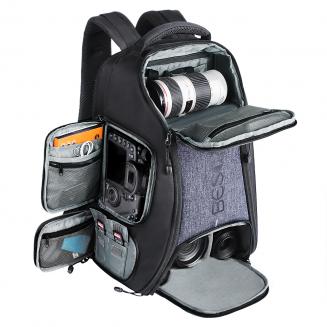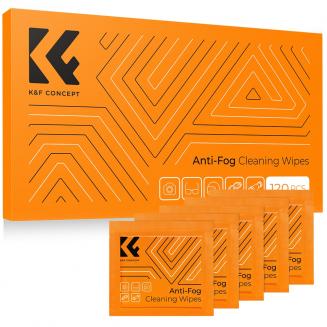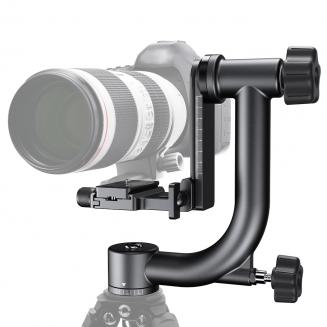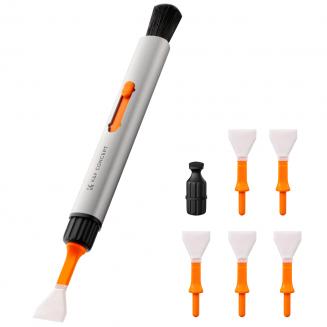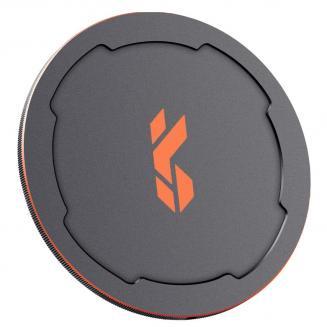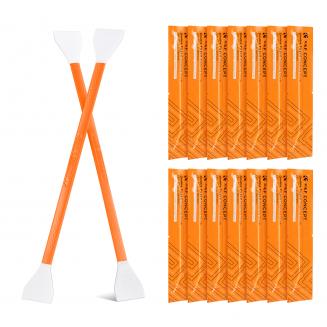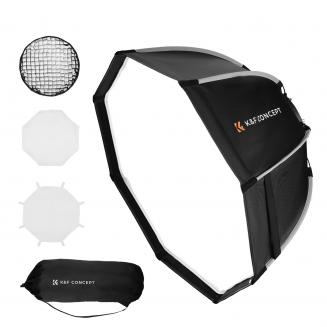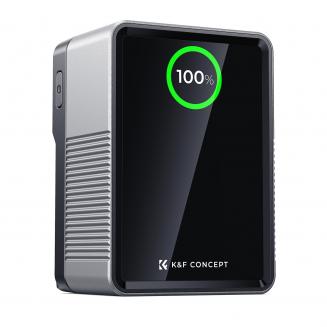
Manual focus
Infinity focus
Copper construction
Precise alignment
Red dot
Easy installation
Lens compatibility
Cost-saving
High quality
Compact design
-Smooth surface for effortless mount, Made of copper.
-This adapter fits Minolta/Sony AF A mount lens to Nikon Z6 Z7 mount camera body.
-Full manual operation, manual focus, infinity focus allowed.
-Red dot identification, precise alignment, easy to install and disassemble.
-If your camera indicated "lens is not properly installed", please modify the camera menu settings. Usually called the release the shutter the lens is not installed", you can modify the settings to allow. Specifically refer to the camera manual.
-This adapter fits Minolta/Sony AF A mount lens to Nikon Z6 Z7 mount camera body.
-Full manual operation, manual focus, infinity focus allowed.
-Red dot identification, precise alignment, easy to install and disassemble.
-If your camera indicated "lens is not properly installed", please modify the camera menu settings. Usually called the release the shutter the lens is not installed", you can modify the settings to allow. Specifically refer to the camera manual.
Original Price
$93.99
Discounted Price
$48.99
Total Save
$45.00
Lens compatibility
Durable construction
Manual operation
Infinity focus
Brass-aluminum build
Wide camera support
Telephoto bracket
Tripod compatibility
Satisfaction assurance
Quality guarantee
-Allow Canon FD mount lenses used on Nikon DSLR camera body.
-Compatible with Nikon camera includes: Nikon D3000, D300s, D3100, D3200, D3300, D3400, D3s, D3x, D4, D400, D4s, D5, D500, D5000, D5100, D5200, D5300, D5500, D5600, D5s, D6, D600, D610, D700, D7000, D7100, D7200, D750, D7500, D760, D800, D810, D810a, D850, D90 etc.
-Made of brass and aluminum. Stable,precise and durable construction.Manually operated.Infinity focus allowed.
-For heavy medium format lenses, we suggest to use with a telephoto bracket and a tripod to balance its weight when shoot.
-30 Days No Reason Return,12 months quality guarantee,100% satisfaction assurance.
-Compatible with Nikon camera includes: Nikon D3000, D300s, D3100, D3200, D3300, D3400, D3s, D3x, D4, D400, D4s, D5, D500, D5000, D5100, D5200, D5300, D5500, D5600, D5s, D6, D600, D610, D700, D7000, D7100, D7200, D750, D7500, D760, D800, D810, D810a, D850, D90 etc.
-Made of brass and aluminum. Stable,precise and durable construction.Manually operated.Infinity focus allowed.
-For heavy medium format lenses, we suggest to use with a telephoto bracket and a tripod to balance its weight when shoot.
-30 Days No Reason Return,12 months quality guarantee,100% satisfaction assurance.
Original Price
$32.99
Discounted Price
$32.99
Total Save
$0.00
Olympus OM
Nikon Z6 Z7
Smooth surface
Copper material
Manual operation
Manual focus
Infinity focus
Red dot
Precise alignment
Easy installation
-Smooth surface for effortless mount, Made of copper.
-This adapter allows you to use the Olympus OM lens to Nikon Z6 Z7 mount camera body.
-Full manual operation, manual focus, infinity focus allowed.
-Red dot identification, precise alignment, easy to install and disassemble.
-If your camera indicated "lens is not properly installed", please modify the camera menu settings. Usually called the release the shutter the lens is not installed", you can modify the settings to allow. Specifically refer to the camera manual.
-This adapter allows you to use the Olympus OM lens to Nikon Z6 Z7 mount camera body.
-Full manual operation, manual focus, infinity focus allowed.
-Red dot identification, precise alignment, easy to install and disassemble.
-If your camera indicated "lens is not properly installed", please modify the camera menu settings. Usually called the release the shutter the lens is not installed", you can modify the settings to allow. Specifically refer to the camera manual.
Original Price
$87.99
Discounted Price
$45.99
Total Save
$42.00
Lens compatibility
Canon EOS R
Stable construction
Precise build
Infinity focus
Manual operation
Durable materials
Quality guarantee
Lightweight balance
Full range
-Allow Olympus OM lenses used on Canon EOS R mount camera body.
-Compatible with Canon EOS R mount series mirrorless camera.
-Made of brass and aluminum. Stable, precise and durable construction. Manually operated. Infinity focus allowed.
-For heavy medium format lenses, we suggest to use with a telephoto bracket and a tripod to balance its weight when shoot.
-30 days no reason return, 12 months quality guarantee, 100% satisfaction assurance.
-Compatible with Canon EOS R mount series mirrorless camera.
-Made of brass and aluminum. Stable, precise and durable construction. Manually operated. Infinity focus allowed.
-For heavy medium format lenses, we suggest to use with a telephoto bracket and a tripod to balance its weight when shoot.
-30 days no reason return, 12 months quality guarantee, 100% satisfaction assurance.
Original Price
$87.99
Discounted Price
$45.99
Total Save
$42.00
Manual focus
Infinity focus
Copper material
Precise alignment
Easy installation
F mount compatible
Z mount support
Red dot guide
Aperture default
Vignetting correction
-Smooth surface for effortless mount, Made of copper.
-This adapter is compatible with Nikon F/AF AI AI-S Lens to Nikon Z6 Z7 mount camera body.
-Full manual operation, manual focus, infinity focus allowed.
-Red dot identification, precise alignment, easy to install and disassemble.
-If your camera indicated "lens is not properly installed", please modify the camera menu settings. Usually called the release the shutter the lens is not installed", you can modify the settings to allow. Specifically refer to the camera manual.
-This adapter is compatible with Nikon F/AF AI AI-S Lens to Nikon Z6 Z7 mount camera body.
-Full manual operation, manual focus, infinity focus allowed.
-Red dot identification, precise alignment, easy to install and disassemble.
-If your camera indicated "lens is not properly installed", please modify the camera menu settings. Usually called the release the shutter the lens is not installed", you can modify the settings to allow. Specifically refer to the camera manual.
Original Price
$87.99
Discounted Price
$45.99
Total Save
$42.00
Lens compatibility
Infinity focus
Durable construction
Manually operated
Brass-aluminum build
Quality guarantee
30-day return
Telephoto support
Mirrorless compatible
Wide adaptability
-Allow Minolta A / Sony A lenses used on Canon EOS R mount camera body.
-Compatible with Canon EOS R mount series mirrorless camera.
-Made of brass and aluminum. Stable, precise and durable construction. Manually operated. Infinity focus allowed.
-For heavy medium format lenses, we suggest to use with a telephoto bracket and a tripod to balance its weight when shoot.
-30 days no reason return, 12 months quality guarantee, 100% satisfaction assurance.
-Compatible with Canon EOS R mount series mirrorless camera.
-Made of brass and aluminum. Stable, precise and durable construction. Manually operated. Infinity focus allowed.
-For heavy medium format lenses, we suggest to use with a telephoto bracket and a tripod to balance its weight when shoot.
-30 days no reason return, 12 months quality guarantee, 100% satisfaction assurance.
Original Price
$93.99
Discounted Price
$48.99
Total Save
$45.00
Leica compatibility
Canon EOS R
Durable construction
Infinity focus
Manual operation
Medium format
Telephoto support
Tripod balance
12-month guarantee
Full range
-Allow Leica M lenses used on Canon EOS R mount camera body.
-Compatible with Canon EOS R mount series mirrorless camera.
-Made of brass and aluminum. Stable, precise and durable construction. Manually operated. Infinity focus allowed.
-For heavy medium format lenses, we suggest to use with a telephoto bracket and a tripod to balance its weight when shoot.
-30 days no reason return, 12 months quality guarantee, 100% satisfaction assurance.
-Compatible with Canon EOS R mount series mirrorless camera.
-Made of brass and aluminum. Stable, precise and durable construction. Manually operated. Infinity focus allowed.
-For heavy medium format lenses, we suggest to use with a telephoto bracket and a tripod to balance its weight when shoot.
-30 days no reason return, 12 months quality guarantee, 100% satisfaction assurance.
Original Price
$87.99
Discounted Price
$45.99
Total Save
$42.00
77mm Compatibility
10 Stops
Multi-Layer Coatings
Waterproof Design
Scratch Resistant
Super Slim
High Quality
Real Colors
Lightweight Frame
Anti-Reflection
-【Premium Quality】Solid ND Lens filter (NOT a variable nd)Made of high quality optical glass, no colour cast while providing solid 10 f-stop reductions and enabling longer exposures to capture the beauty of time and movement.
-【Keep Real colors】Adopted 28-Layer multi-resistant coating technology, the green coating helps effectively reduce filter surface reflection and the ghosting while making the filter anti-scratch, water repellent, oil and dust resistant.
-【Ultra Slim and Lightweight】Super slim and lightweight aluminum frame, maximum reduce impact on light and effectively avoid dark corner for wide-angle shooting.
-【Functions】ND1000 Filter Enables slow shutter speeds to be used to record movement in subjects such as waterfalls, providing a silky smooth affect to flowing water.
-【Choose the right size】This K&F ND1000 is compatible with all 77mm lenses. Please verify your camera's lens thread size before ordering. Your camera's lens thread size will be marked somewhere on the lens barrel or printed underneath your lens cap. This number is always preceded by a "Ø" (diameter) symbol. For example: Ø77=77mm lens thread size.
-【Keep Real colors】Adopted 28-Layer multi-resistant coating technology, the green coating helps effectively reduce filter surface reflection and the ghosting while making the filter anti-scratch, water repellent, oil and dust resistant.
-【Ultra Slim and Lightweight】Super slim and lightweight aluminum frame, maximum reduce impact on light and effectively avoid dark corner for wide-angle shooting.
-【Functions】ND1000 Filter Enables slow shutter speeds to be used to record movement in subjects such as waterfalls, providing a silky smooth affect to flowing water.
-【Choose the right size】This K&F ND1000 is compatible with all 77mm lenses. Please verify your camera's lens thread size before ordering. Your camera's lens thread size will be marked somewhere on the lens barrel or printed underneath your lens cap. This number is always preceded by a "Ø" (diameter) symbol. For example: Ø77=77mm lens thread size.
Original Price
$62.99
Discounted Price
$39.99
Total Save
$23.00
ND1000 Filter
10 Stops
Waterproof Coating
Scratch Resistant
Multi-Layer Coatings
Ultra Slim
Lightweight Frame
Real Colors
Wide-Angle Compatible
67mm Size
-【Premium Quality】Solid ND Lens filter (NOT a variable nd)Made of high quality optical glass, no colour cast while providing solid 10 f-stop reductions and enabling longer exposures to capture the beauty of time and movement.
-【Keep Real colors】Adopted 28-Layer multi-resistant coating technology, the green coating helps effectively reduce filter surface reflection and the ghosting while making the filter anti-scratch, water repellent, oil and dust resistant.
-【Ultra Slim and Lightweight】Super slim and lightweight aluminum frame, maximum reduce impact on light and effectively avoid dark corner for wide-angle shooting.
-【Functions】ND1000 Filter Enables slow shutter speeds to be used to record movement in subjects such as waterfalls, providing a silky smooth affect to flowing water.
-【Choose the right size】This K&F ND1000 is compatible with all 67mm lenses. Please verify your camera's lens thread size before ordering. Your camera's lens thread size will be marked somewhere on the lens barrel or printed underneath your lens cap. This number is always preceded by a "Ø" (diameter) symbol. For example: Ø77=77mm lens thread size.
-【Keep Real colors】Adopted 28-Layer multi-resistant coating technology, the green coating helps effectively reduce filter surface reflection and the ghosting while making the filter anti-scratch, water repellent, oil and dust resistant.
-【Ultra Slim and Lightweight】Super slim and lightweight aluminum frame, maximum reduce impact on light and effectively avoid dark corner for wide-angle shooting.
-【Functions】ND1000 Filter Enables slow shutter speeds to be used to record movement in subjects such as waterfalls, providing a silky smooth affect to flowing water.
-【Choose the right size】This K&F ND1000 is compatible with all 67mm lenses. Please verify your camera's lens thread size before ordering. Your camera's lens thread size will be marked somewhere on the lens barrel or printed underneath your lens cap. This number is always preceded by a "Ø" (diameter) symbol. For example: Ø77=77mm lens thread size.
Original Price
$49.99
Discounted Price
$31.99
Total Save
$18.00
ND1000 Filter
10 Stops
28 Coatings
Waterproof
Scratch Resistant
Ultra Slim
Lightweight Frame
Anti-Reflection
Wide-Angle Friendly
High Quality
-【Premium Quality】Solid ND Lens filter (NOT a variable nd)Made of high quality optical glass, no colour cast while providing solid 10 f-stop reductions and enabling longer exposures to capture the beauty of time and movement.
-【Keep Real colors】Adopted 28-Layer multi-resistant coating technology, the green coating helps effectively reduce filter surface reflection and the ghosting while making the filter anti-scratch, water repellent, oil and dust resistant.
-【Ultra Slim and Lightweight】Super slim and lightweight aluminum frame, maximum reduce impact on light and effectively avoid dark corner for wide-angle shooting.
-【Functions】ND1000 Filter Enables slow shutter speeds to be used to record movement in subjects such as waterfalls, providing a silky smooth affect to flowing water.
-【Choose the right size】This K&F ND1000 is compatible with all 58mm lenses. Please verify your camera's lens thread size before ordering. Your camera's lens thread size will be marked somewhere on the lens barrel or printed underneath your lens cap. This number is always preceded by a "Ø" (diameter) symbol. For example: Ø77=77mm lens thread size.
-【Keep Real colors】Adopted 28-Layer multi-resistant coating technology, the green coating helps effectively reduce filter surface reflection and the ghosting while making the filter anti-scratch, water repellent, oil and dust resistant.
-【Ultra Slim and Lightweight】Super slim and lightweight aluminum frame, maximum reduce impact on light and effectively avoid dark corner for wide-angle shooting.
-【Functions】ND1000 Filter Enables slow shutter speeds to be used to record movement in subjects such as waterfalls, providing a silky smooth affect to flowing water.
-【Choose the right size】This K&F ND1000 is compatible with all 58mm lenses. Please verify your camera's lens thread size before ordering. Your camera's lens thread size will be marked somewhere on the lens barrel or printed underneath your lens cap. This number is always preceded by a "Ø" (diameter) symbol. For example: Ø77=77mm lens thread size.
Original Price
$37.99
Discounted Price
$23.99
Total Save
$14.00
New Arrival
Related Accessories
About Us
ABOUT KENTFAITH
-Enjoy Your Selected Digital Life
KentFaith as an end-consumer service provider, kentFaith is committed to improving consumer experience and providing consumers with the most suitable products. We have 150 patents and have won international product awards. We are popular in 200 countries and regions. We have been listening to the real needs of users and are committed to creating an ideal choice that meets your inner expectations and providing you with a convenient and practical exclusive shopping page.
20K + Products
56+
Countries and Regions
20Million+
Customers
150+
Patents
260+
Commercial Partners
1200+
Online and offine Retailers
20000+
Products
More Related Pages
$19.99 - $55.99
$23.99 - $48.99
$23.99 - $48.99
$23.99 - $48.99
$23.99 - $48.99
$23.99 - $48.99
$23.99 - $48.99
$23.99 - $48.99
$23.99 - $48.99
$23.99 - $48.99
$29.99 - $48.99
$28.99 - $52.99
Related Feature
Feature You May Like

